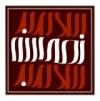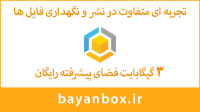Biography of Ayatollah Khamenei the Leader of the Islamic Revolution

On the 16th of July 1939, the future Leader of Islamic Iran was born in the holy city of Mashhad, in the province of Khorasan. Sayyed Ali was the second son of Sayyed Javad Khamenei, a humble and poor Islamic scholar who taught all members of his family how to lead a simple, humble way of life.
On the 16th of July 1939, the future Leader of Islamic Iran was born in the holy city of Mashhad, in the province of Khorasan. Sayyed Ali was the second son of Sayyed Javad Khamenei, a humble and poor Islamic scholar who taught all members of his family how to lead a simple, humble way of life.

"My father, though a well-known religious figure, was a bit of an
ascetic. We had a hard life. Sometimes for supper we had nothing but
bread with some raisins, which our mother had somehow improvised.... our
house, some sixty-five square meters, consisted of a single room and a
gloomy basement. When visitors came to see my father as the local cleric
to consult about their problems, the family had to move into the
basement while the visit went on.... Years later some charitable persons
bought the small, empty lot adjacent to our house, so we were able to
build two more rooms."
Detailed biography of Ayatollah Khamenei, the Leader of Islamic Revolution
EDUCATION
At the age of four Sayyed Ali and his older brother Mohammad, were
sent to maktab, the traditional primary-schools of that time, in order
to learn the alphabet and the Holy Quran. Later, he was transferred to a
newly established Islamic school to continue his learning.
After this primary schooling, Sayyed Ali pursued his studies at the
theological seminary in Mashhad. "The main encouraging factors for this
enlightened decision were my parents, especially my father" says
Ayatollah Khamenei today.

At Soleiman Khan and Nawwab religious schools and under the supervision
of his father and the tutorships of some great religious scholars, he
studied all the 'intermediate level ' curriculum including logic,
philosophy and Islamic jurisprudence in the exceptionally short time of
five years. He then started his advanced level studies called darse
kharij with such eminent scholars and instructors as Grand Ayatollah
Milani.
THE FAMED SEMINARIES OF NAJAF AND QUM
The young Sayyed Ali was only eighteen years old when he started his
studies at the highest level. He decided to make a pilgrimage to the
holy shrines in Iraq, and so he left Iran for Najaf in 1957. He was
fascinated by the theological and academic instructions of such eminent
scholars such as Ayatollah Hakim and Ayatollah Shahrudi. He attended
their lessons and was willing to stay there and continue his studies in
order to profit from these excellent teachers. However his father made
it known that he preferred his son continue his advanced studies in the
holy city of Qum. Thus, respecting his father's wish, he returned to
Iran in 1958.
Diligently and enthusiastically he followed his advanced studies in Qum
from 1958 to 1964 and benefited from the teachings of great scholars and
grand ayatollahs such as Ayat. Borujerdi, Imam Khomeini, Ayat. Haeri
Yazdi and Allamah Tabatabai.

He received the bad news that his father had lost his sight in one eye
and was not able to read properly. This prompted him to return to
Mashhad and while being at the service of his father, seek further
knowledge from him, from Ayatollah Milani and other important scholars
residing in Mashhad. The young Sayyed Ali, who had now become a mujtahid
by having completed his advanced level studies, began to teach various
religious subjects to younger seminary and university students.
Recalling this important point of departure in his life, the Leader
says, "If there have been any successes in my life, they all go back to
God's blessings favored upon me because of my dutiful caring for
parents."
POLITICAL ACTIVITIES
"In the areas of political and revolutionary ideas and Islamic
jurisprudence, I am certainly a disciple of Imam Khomeini" says
Ayatollah Khamenei. He adds: "Yet the very first sparks of consciousness
concerning Islamic, revolutionary ideas and the duty to fight the
Shah's despotism and his British supporters, was kindled in my soul at
the age of 13 when the brave cleric, Nawwab Safavi, later martyred by
the Shah's regime, came to our school in Mashhad in 1952 and delivered a
fiery speech against the Shah's anti-Islamic and devious policies."
It was in Qum in 1962, that Sayyed Ali joined the ranks of the
revolutionary followers of Imam Khomeini who opposed the pro-American,
anti-Islamic policies of the Shah's regime.
Dedicated and fearless, he followed this path for the next 16 years
which ultimately led to the downfall of the Shah's brutal regime:
persecution, torture, imprisonment and exile could not make him waver
for a moment.

In May of 1963 (corresponding to the holy month of Muharram), Imam
Khomeini honored the young, brave cleric Sayyed Ali, with the mission of
taking a secret message to Ayatollah Milani and other clergymen in
Mashhad, on the ways and tactics of exposing the true nature of the
Shah's regime. He fulfilled this mission properly and traveled to the
city of Birjand for further propagation of Imam Khomeini's views. Here
he was arrested for the first time and spent one night in jail. The
following the authorities ordered him not to speak at the pulpit again.
From that moment he knew that he would be under police surveillance all
the time. Of course he did not submit to police threats, and as a result
of his activities relating to the bloody June 1963 Uprising (15th of
Khordad ), he was again arrested and transferred to Mashhad to spend ten
days in prison under severe conditions.
In January 1964 (Ramadhan 1383), according to a well-organized plan,
Ayatollah Khamenei and a few close friends traveled to Kirman and
Zahedan in southern Iran, to expose the phony referendum the Shah was
holding for his so-called reforms. There in the course of many public
speeches, he exposed the satanic American policies of the Pahlavi
regime. This time, the Shah's feared intelligence agency, SAVAK, stepped
in and arrested him one late evening. He was taken to Tehran by an
airplane to spend two months in solitary confinement during which time
he was tortured.
Once freed, he started holding lessons on the exegeses of the Holy
Quran, the Prophetic Traditions and Islamic ideology in Mashhad and
Tehran. These lessons were most appreciated by the revolutionary Iranian
youth. As he was sure now that SAVAK was watching him closely, he was
forced to go underground in 1967. However, he was arrested again for
holding such classes and Islamic discussions.
Ayatollah Khamenei has himself explained the reasons for such measures by SAVAK:
"From 1970 onwards, grounds for an armed movement were being laid out.
Accordingly the regime's sensitivity and severity of action against me
increased. They could not believe that the armed actions were not
connected with a sound, Islamic ideology. They thought that there must
be links between these revolutionaries and people like me because of my
intellectual and diligent activities. Despite all this, after I was
released, more and more people attended my classes on the Holy Quran and
many were present at our clandestine gatherings."
LAST ARREST AND EXILE
Throughout the years 1972-1975, Ayatollah Khamenei was holding
classes on the Holy Quran and Islamic ideology in three different
mosques in Mashhad. These classes together with his lectures on Imam
Ali's (as) Nahjul Balagha attracted thousands of conscious,
politically-minded youth and students. The lectures were circulated
among the people in hand-written or typed forms, in most towns and
cities.
His students traveled to distant cities to spread his lessons and ideas.
All this frightened the Shah's SAVAK agents and so, in the winter of
1975, they broke into his home in Mashhad and arrested him for the 6th
time and confiscated all his books and notes.

Now he was detained in Tehran's notorious "Police-SAVAK Joint Prison"
for many months. This had been his most trying imprisonment, and
Ayatollah Khamenei has this to say about the barbarous treatment of the
detainees: "These conditions may be understood only by those who
suffered them..."
In the autumn of 1975, he was freed and sent back to Mashhad and he was
now completely banned from delivering lectures or holding classes.
His clandestine activities, however, prompted SAVAK to apprehend him in
the winter of 1976 and sentence him to exile for three years. This
difficult period came to an end in the latter part of 1978 due to the
prevailing political conditions, and Ayatollah Khamenei returned to
Mashhad a few months before the triumph of the Islamic revolution. He
diligently continued his political-religious activities in this
momentous period of civil unrest and mass demonstrations throughout
Iran.
Thus, after nearly 15 years of bearing all sorts of torture and
maltreatment at the hands of the agents of the Shah's bloodthirsty
regime, he could now witness the fall of the tyrannical Pahlavi regime
and the rise of an Islamic Republic in Iran.

THE VICTORY OF THE ISLAMIC REVOLUTION
Shortly before the triumph of the Islamic Revolution (February 11, 1979) and before Imam Khomeini's victorious return to Iran from Paris, an Islamic Revolutionary Council was formed at the behest of the Imam. Ayatollah Khamenei was appointed as a member of this Council together with other important Islamic notables such Shahid Ayatollahs Motahhari and Beheshti. He, therefore, left Mashhad for Tehran to take up his new responsibilities.

NEW RESPONSIBILITIES
The following is a list of the services he has rendered to the Islamic Republic since that time:
1980- Founding member of the Islamic Republic Party, together with such
religious scholars and Mujahids as Shahid Beheshti, Rafsanjani, Shahid
Bahonar, and Musavi-Ardebili.
• Deputy-Minister of Defence
• Supervisor of the Islamic Revolutionary Guards
• Imam of Tehran's Friday Congregational Prayers, per Imam Khomeini's decree.
• Elected Tehran MP in the Majlis (Consultative Assembly)
1981- Imam Khomeini's Representative at the High Council of Defence
• Active presence at the fronts of the Iraqi-imposed war.
1982- Elected President of the Islamic Republic of Iran following the
martyrdom of President Mohammad Ali Rajai (Ayatollah Khamenei was
himself the target of an assassination attempt at Abu Dhar mosque in
Tehran after which he was hospitalized for a few months).
• Appointed Chairman of the Revolution's Cultural Council.
1986- President of the Expediency Council
• Re-elected President of the Islamic Republic for a second 4-year term
1989- Elected as the Leader of the Islamic Republic of Iran by the Assembly of Experts after the demise of Imam Khomeini.
1990- Chairman of the Committee for Revision of the Constitution.

WORKS AUTHORED AND TRANSLATIONS
Works Authored
1. Islamic Thought in the Quran (An Outline)
2. The Profundity of Prayer
3. A Discourse on Patience
4. On the Four Principal Books of Traditions Concerning the Biography of Narrators.
5. Guardianship (Wilayah)
6. A General Report of the Islamic Seminary of Mashhad
7. Imam Al-Saadiq (AS)
8. Unity and Political Parties
9. Personal Views on the Arts
10. Understanding Religion Properly
11. Struggles of Shia Imams (as)
12. The Essence of God's Unity
13. The Necessity of Returning to the Quran
14. Imam Al-Sajjad (as)
15. Imam Reza (as) and His Appointment as Crown Prince.
16. The Cultural Invasion (Collection of Speeches)
17. Collections of Speeches and Messages ( 9 Volumes )
Translations (from Arabic into Farsi)
1. Peace Treaty of Imam Hassan (AS) , by Raazi Aal-Yasseen
2. The Future in Islamic Lands, by Sayyed Qutb
3. Muslims in the Liberation Movement of India, by Abdulmunaim Nassri
4. An Indictment against the Western Civilization, by Sayyed Gutb




